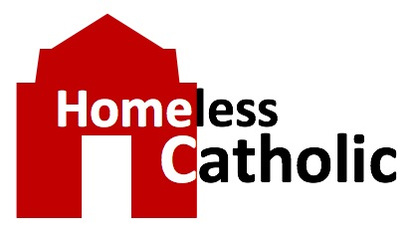Lady of Guadalupe
January 21, 2016Ever thought of a professor’s presentation as a series of intellectual riffs? I did last night.
In music and poetry, a riff is a repeatable theme, idea or phrase (thanks to the Free Dictionary). Jazz is largely comprised of riffs, short rhythmic improvisations. Or, unfortunately for compartmentalization-minded folks like me, it’s not. Without the riffs in Jazz, I’m lost. My son’s latest jazz compilations include finely worked out riffs, catchy, interesting and technically challenging. Whew.
So, there I am at a talk last night with Steve Hall, Lou Occhi, and Carol and Roger Jacobs, listening to David Carrasco talk about the Virgin of Guadalupe, and he begins with a set of riffs on “divine presence.” His recognition of sacred things as more than “ideas” struck all of us. The sacred enlivens divine presence in an actual experience, he explained. He called out the sacredness in the Icon of Guadalupe, the image which appeared on Juan Diego’s cloak; the sacredness in the hill where whom he called the Mother of God the “Migrant Mother” appeared; and the sacredness of the “bundle,” an indigenous habit of carrying holy items as not just reminders of their ancestors but as powerful, loving artifacts.
Like Jazz riffs, the sacredness tingle up my spine from David Carrasco passionate expression of the presence of the divine in living, tactile artifacts (he’s a sponsored professor at Harvard Divinity School) didn’t last. He simply quit on that direction, and proceeded to hand out tidbits of unconnected intellectual morsels that simply lead nowhere. Intriguing, but unsatisfying.
I consider Jazz riffs mostly a tease, because I’m not tuned into the technical development of the music. After a while, the really good stuff builds one riff upon another into a crescendo, representing an actual spiritual experience. Or so my son explains it. I almost get it. As I listen to more Jazz I’m getting better tuned, but I don’t think I have enough years left to fully understand what’s going on. In Jazz, though, the problem is mine. There is “bad” Jazz, or music that really isn’t going anywhere. I have a difficulty identifying what is good or bad because I’m a novice.
Jazz doesn’t have to be technically astounding to be good. A good quality sound, built upon riffs, can accomplish a spiritual awakening because God speaks to us in music. Jazz is not the most complicated form of music, but that complication gives God a fascinating voice.
Intellectual riffs do the same thing, I think. The really good stuff build one riff of teaching upon another into a crescendo. In last night’s teaching, Professor Carrasco was not just describing a spiritual idea, but bringing the spiritual to life. A presentation like Carrasco’s on the Virgin of Guadalupe, where he showed a deep understanding of the presence of divinity, called out for that divine teaching. God lived in the indigenous Indians, the Spaniards, the Church, and the miracles of ancestors. Yes, I understood.
Well, Carrasco appeared to be building that teaching into a substantive direction, but he was only teasing. He is an arts and sciences anthropologist, which I would loosely equate to being a Jazz man in the world of history. His phrasing was lovely, his bullet points technically progressive, and his material intriguing. But like some bad Jazz, he really wasn’t going anywhere.
His tease, though, didn’t just disappoint the Christian Catholic believer. He was teasing the believers in any gods, wafting out a tale of the Virgin of Guadalupe as a feminine deity for all time. He almost seemed to suggest that we can pick any position on gods and ancestors and we will not be mistaken. All roads lead to someplace. Duh. And, sheesh.
I’ve got some work to do on my anthropological understanding of Marian appearances, something which I formerly considered more likely as yearnings turned into hoaxes. I no longer think that. The Communion of Saints isn’t just a term. It’s not just an other-life audience sitting on clouds. It’s the Body of Christ, innate, or better “inherent” in the purpose of our DNA, and a natural part of our desired place in God’s design. Mary is the first willing vessel of God living within us, so she’s got a unique position among the saints. While we are hosts of the Holy Spirit, as Christian’s understand God’s living presence, and while Jesus and the Holy Spirit are one, the pregnant virgin and nursing Mary, the Mother of God, is mind blowing. God was not birthed by Mary, but Mary was the birth mother of the incarnated God. This mystery and truth of Christian faith only makes sense when God awakens a willing disciple who wants to grasp the notion. It’s not a mythical or dangerous concept to believe that we could witness a Marian apparition. Anymore than thinking that Jazz can open the conduit of divine into our soul.
Yet, I’ve never heard of the deification of Mary in a more historical way than I did last night. I don’t believe Mary is a god, or any kind of devised deity. She’s not an any equal footing with the divine. She does, however, represent many of the qualities I heard about the woman last night who loved the poor, the weak, and the oppressed, and urged a conversion in the land. She has been spoken about from ancient times, the virgin mother of God. The indigenous stories of virgin births are not accidental, or celestial myths. They hearken and prophesy from the earliest knowledge of God’s promises.
So, I have some work to do, to get beyond the tease, the dropped and abandoned riff, and the tentacles of random anthropology. I’ll have God with me, though, not some geo-political or earthen mysticism to guide me.
It’s good to hear what the Jazz man is saying, but the spiritual experience that comes through the saints can be a much more fruitful view of the divine.

